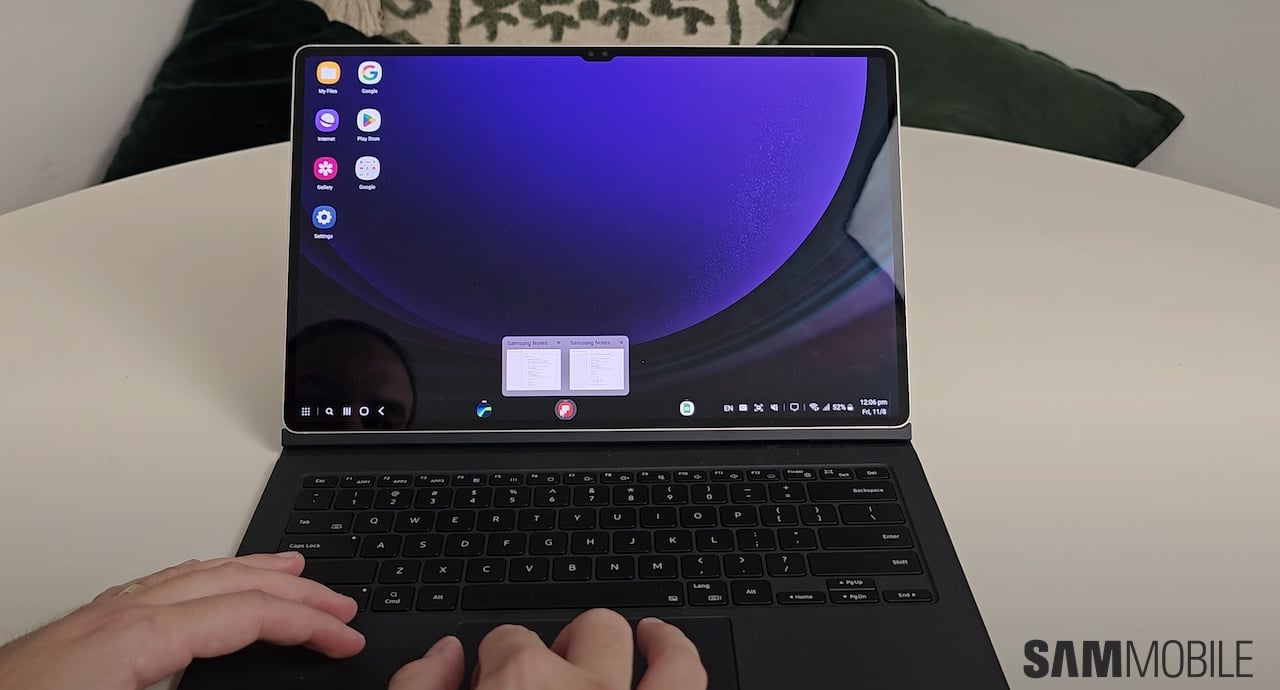Last updated: June 21st, 2024 at 14:36 UTC+02:00
This year, Samsung appears more open to experimenting with new products and form factors than usual. But amid this hard push toward innovation, one device category seems absent in Samsung’s growing portfolio: The foldable tablet.
Foldable smartphones have been around for half a decade. And as these hybrid phones continue to gain popularity, we’d like to see Samsung step outside its comfort zone and try creating a different kind of foldable device. Why not a tablet?
We’ve been trying to answer that question and shared our thoughts in a few editorials. Throughout the week, we have studied the potential pros and cons of two foldable Galaxy tablet form factors – 8.7 and 10.5 inches. Today, we’re exploring why an Ultra-sized 14.6-inch foldable Galaxy tablet could succeed or fail and why Samsung might want to develop one or avoid it at all costs.
The benefits of a 14.6-inch foldable Galaxy tablet
Samsung already offers a 14.6-inch tablet through its Galaxy Tab S9 line. It’s called Ultra and is the closest tablet you will find to a laptop replacement — as long as you are willing to buy a keyboard cover accessory. It measures 326.4 x 208.6 x 5.5 and weighs 732 grams. Here’s our list of pros why a foldable Ultra tablet could be a good choice for kicking off the foldable tablet segment:
- An impressive show of force. Splitting a 14.6-inch tablet in half would require some serious engineering, and Samsung would undoubtedly become the center of attention for pulling it off.
- No other 14.6-inch device would be as portable as a 14.6-inch tablet that could fold in half. It could be a great device for a niche of business users who need a powerful device for presentations on the go.
- Thanks to its size, a foldable 14.6-inch tablet could be used more comfortably as a full-touch laptop in Flex Mode. It could pair beautifully with DeX.
- Hardware with no compromises. Even when cut in half by a hinge, this foldable tablet could have the biggest battery, fastest charging, best cameras, and fantastic performance.
The disadvantages of a 14.6-inch foldable Galaxy tablet
- Even if folded in half, such a device might still be too large. Far from pocketable and perhaps not compact enough to fully take advantage of the benefits of a hinged design.
- Developing a 14.6-inch foldable tablet would be costly. The large foldable screen would not be cheap, and neither would an oversized hinge capable of holding the tablet’s two halves together.
- Aside from an exorbitant price, a foldable 14.6-inch screen would cost a lot to replace if damaged.
- It might not be possible for Samsung to create a keyboard cover for a foldable 14.6-inch tablet. Samsung would have to design a keyboard attachment that could fold with the tablet. Otherwise, this slate would not be as good of a laptop replacement as a rigid Ultra tablet.

- As it would cost even more than a rigid Ultra tablet, this device might not become a hit overnight. It could be appealing to a very narrow niche of potential customers, such as select business users or regular users who have disposable income and always want to be on the cutting edge of technology.
- There’s little chance a large foldable device like a 14.6-inch tablet would ever become affordable enough to break into the mainstream.
- A big hinge could add too much weight. Even though a 14.6-inch foldable tablet would have a smaller footprint than a rigid Ultra tablet when folded, it might not be easy to carry due to its extra weight.
- Although great for non-interactive content such as movies and videos, 14.6-inch tablets are not easy to use without a kickstand or a keyboard accessory. They are not easy to hold with one hand and control with the other.
Conclusion
A 14.6-inch foldable Galaxy tablet would no doubt be impressive, but it might be too risky for Samsung to ever produce. Its limitations would make it a niche device with low chances of becoming widespread.
Aside from select business users, most people who would buy a very expensive 14.6-inch foldable tablet would only do so because of their love of cutting-edge technology. However, for average tablet users, rigid tablets would likely be a far better option.
Samsung could develop this kind of device as a show of force, but it might not be the best way to introduce a new segment to the public.






